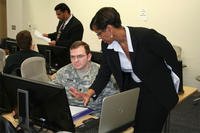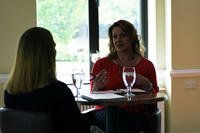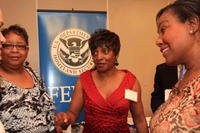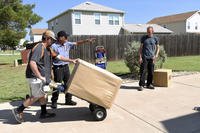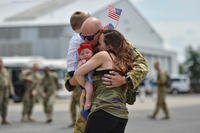When First Lady Michelle Obama and Dr. Jill Biden, wife of Vice President Joe Biden started the Joining Forces campaign 15 months ago, they did so with the goal of creating impactful and lasting health, education and employment support for military families.
The campaign had two significant achievements this week that its director, Navy Capt. Brad Cooper, told me hit both of those marks.
First, North Carolina became the 26th state to pass a law making it easier for military spouses to transfer their professional licenses. South Carolina and Hawaii passed similar laws in recent weeks, potentially affecting tens of thousands of military spouses, Cooper said. With similar legislation pending in California, Ohio and New Jersey, the campaign is “exceeding our expectations” in getting laws passed in all 50 states by the end of 2014, he said.
“As I take step back and look this -- and my dad was an Army officer -- this signals a pretty remarkable cultural shift,” Cooper said. “I remember my mother -- as well as my wife, spouses of my friends -- were reluctant even to indicate they were military spouses” to prospective employers, he said.
Second, the National Association of Social Workers, at its annual convention here this week, announced it is launching a free, online training course for all social workers to better understand the unique needs of military families. It also is providing a set of standards for working with veterans and military families, and is creating a professional Credential for Social Work with Veterans and Military Families. (Read more.)
Social workers are considered the nation’s frontline mental health services providers, and they practice in every county in the country. The NASW represents 650,000 of them. Its pledge to Joining Forces follows that of the four largest nursing associations, representing 3 million nurses, and the Association of American Medical Colleges and the American Association of Colleges of Osteopathic Medicine, with 105 and 25 schools, respectively, in training doctors to serve military families and veterans. The Association of Marriage and Therapy Therapists also has signed on, as well as associations representing psychiatrists, psychologists and surgeons.
“This really represents, to me, not just the impactful piece, but the sustaining piece,” Cooper said.
Spouses’ and veterans’ employment also has made major strides, Cooper said. More than 2,000 companies have signed on already hiring 25,000 spouses and 65,000 veterans, and pledging to hire another 175,000 in the next two years, helping bring down the veterans’ unemployment rate, he said.
“This really is the largest outreach and advocacy efforts we’ve had on behalf of veterans and their families for years,” Cooper said.
Joining Forces has been successful, he said, because “we’ve been able to breach through years and years of bureaucracy and bring people together and focus them on the effort.” All they needed was leadership and direction, he added.
“People, generally, want to be helpful,” Cooper said. “They don’t always know what they can do. Our objective is to steer them to meaningful action.”
Joining Forces’ efforts have caught the attention of military spouses.









